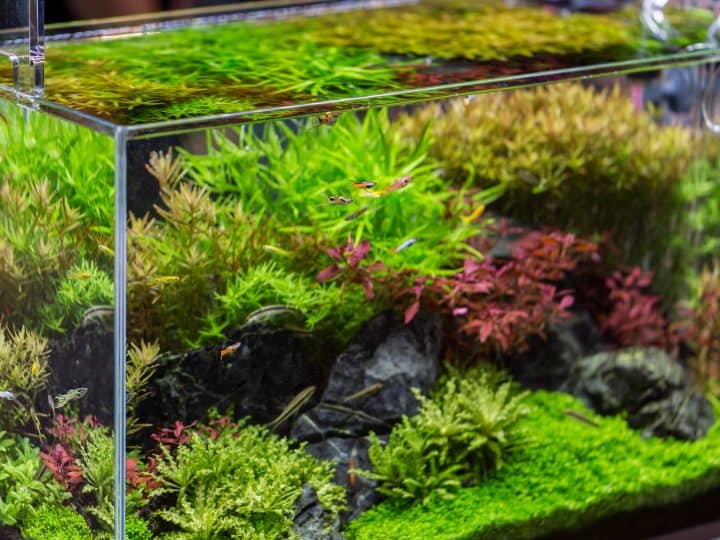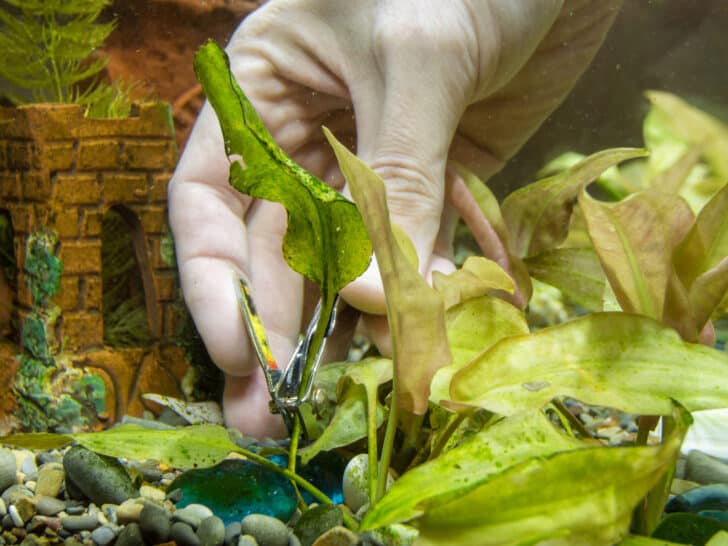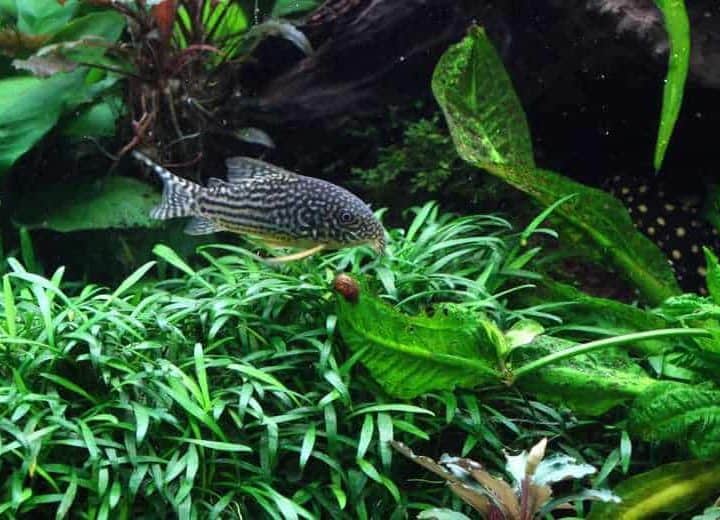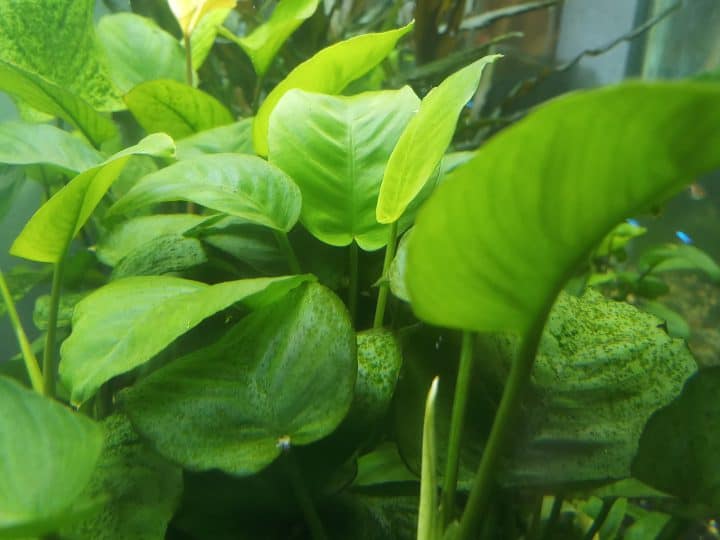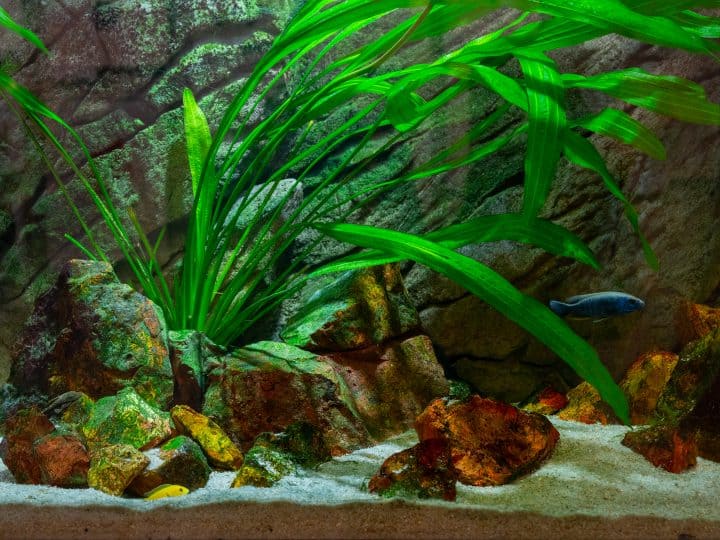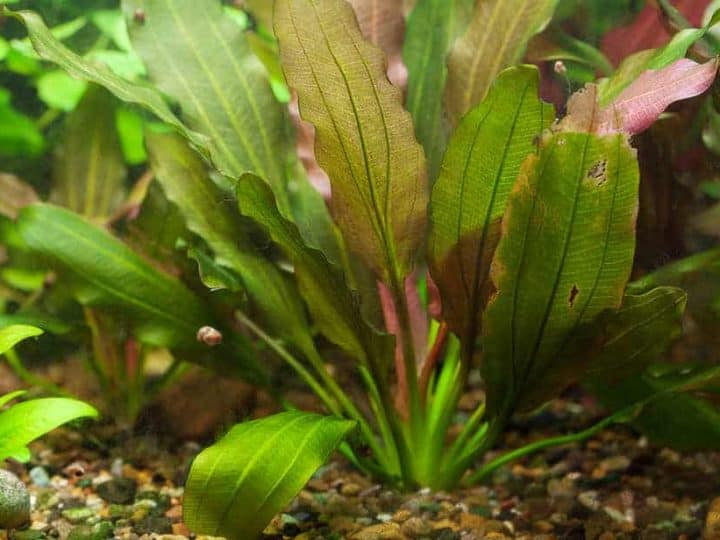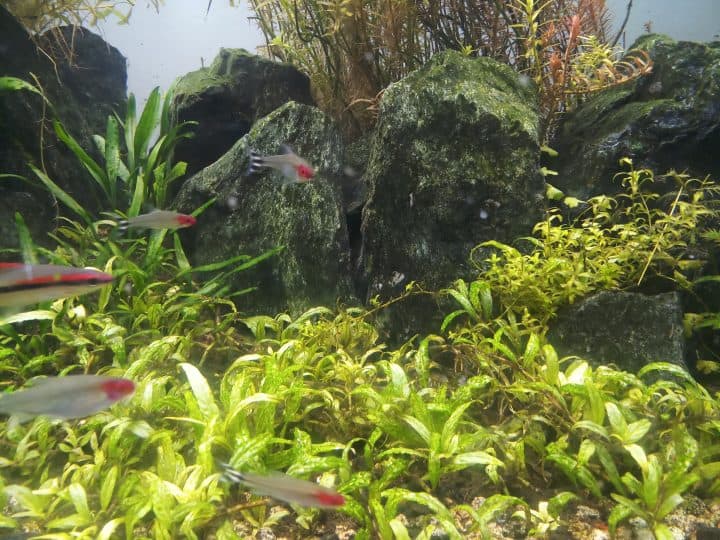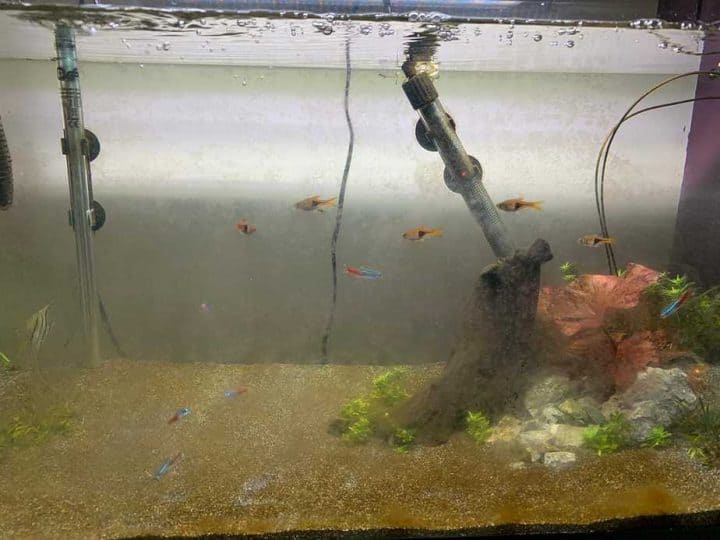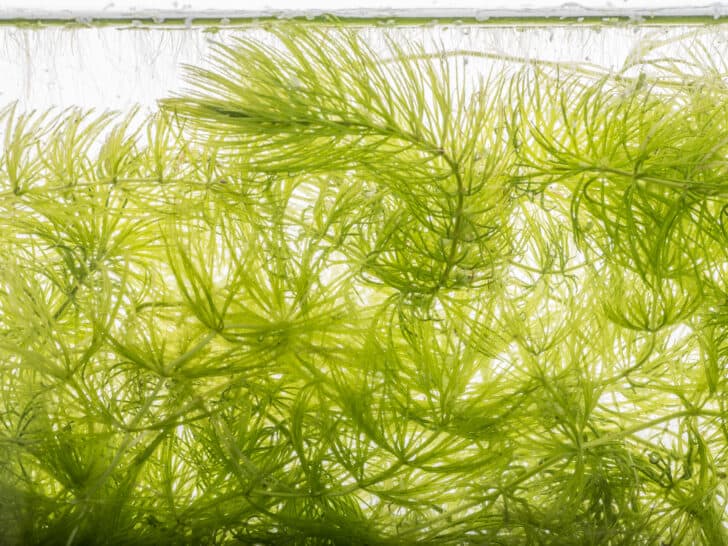An aquarium can make a gorgeous addition to any home, and the best way to bring your tank to the next level is by using natural, living aquarium plants. You may notice that as your plants settle in, dust starts settling on their leaves, leaving you wondering how it happened and what you can do to address the issue.
Quick Answer
Aquarium plants may look dusty due to the accumulation of grimy particles or the buildup of algae. Fortunately, these issues are no cause for alarm and are fixable. The first step to undusting your aquarium plants is to identify the source of the problem.
By fully understanding why your plants look dusty, you can quickly tackle the problem to keep your aquarium sparkling clean and clear. In this accessible guide, I’ll explain everything you need to know about this common aquarium issue. Keep reading.
Common Causes of Dusty Leaves
If the plants in your aquarium look dusty, fret not because that is a common occurrence. In almost every case, dusty-looking aquarium leaves are caused by a dirty tank or a form of algae. Read on to see if either of these descriptions fits your tank problems.
You See Dotted Particles Floating in Your Tank
When you look at the water in your tank, does it appear dotted with specks of grime? Is the entire floor of your tank, plants included, covered in a thin layer of white dirt?
If this describes your tank, you’re likely having an issue with floating particles that appear to the naked eye almost as strange white flakes marring the clarity of your water.
It’s difficult to tell exactly what causes these floating particles without having an actual view of the problem. In many cases, these particles form from moldy, uneaten fish food, but in other instances, calcium buildup in your tank can cause the problem.
This buildup can easily occur due to hard-water buildup on the bottom of the lid, which flakes off and falls into the tank. Regardless of the issue, you can easily clean away this harmless nuisance.
But the slightly more harmful relative, algae, might provide a few more difficulties. Let’s now talk about this nuisance.
Your Tank Might Have an Algae Buildup
When you look into your water, does it appear milky? Or does it have a strange, soft shade of green? Do your aquarium rocks look somewhat fuzzy?
If you see any of these issues, your tank is in the early stages of an algae problem.
Regardless of how clean you keep your tank, an algae bloom is almost a certainty. The presence of light and ammonia causes algae. Because ammonia is a major byproduct of fish and you’re likely to require a good deal of light, an algae bloom is bound to happen at some point or another.
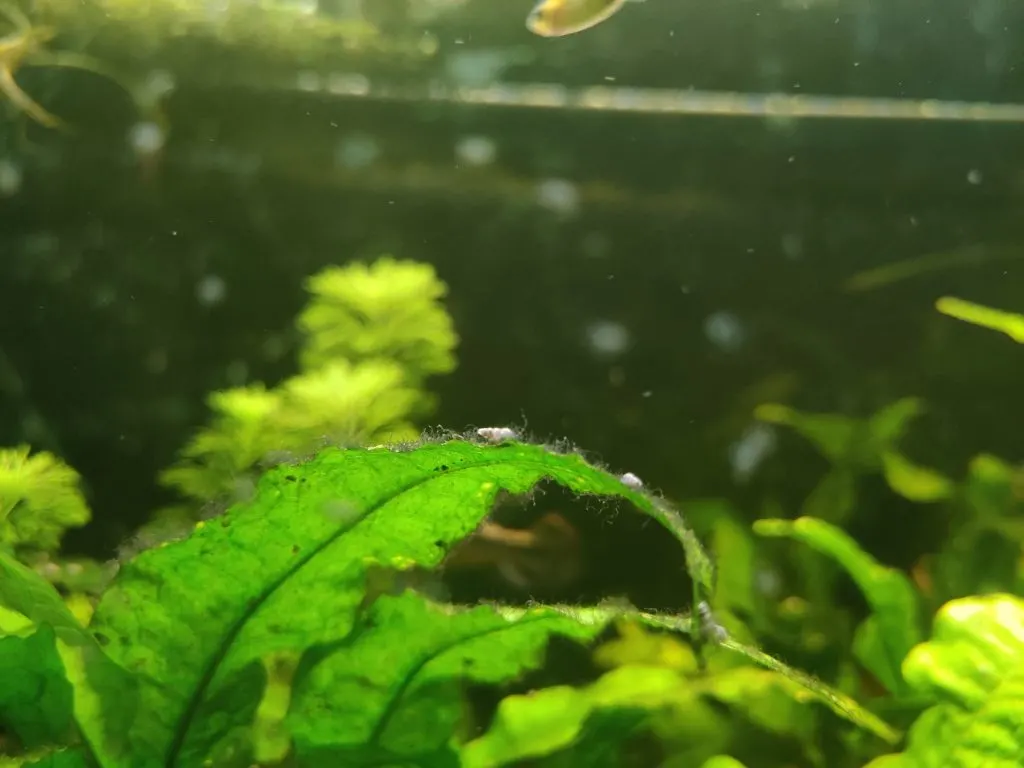
How To Clean Dusty Leaves
Once you have identified the source of the problem, you can begin taking the necessary step for cleaning up the main issues. Below are easy ways for cleaning your aquarium plants’ dusty leaves.
1. Clean Your Tank
Whether or not your dusty leaves are caused by debris or algae, cleaning your aquarium is a good place to start. If floating particles are your main problem, this should help. But if algae are the culprit, then at least you’ve got a clean tank to start!
Change the filter in your tank.
As you do, make sure that the filter you’ve replaced the old one with is correctly fitted to your system and is clean before starting the process. Also, check that the suction in your aquarium is appropriately working to circulate the water.
If not, it may be time to replace that equipment.
The best filter to remove fine particles is going to be a sponge filter. This specific filter style uses incredibly fine pores to clean water while grabbing hold of the fine particles clouding your aquarium.
The easiest way to clean the gravel in your tank is through the use of a gravel vacuum, which can be purchased at a reasonable price. This is the one I recommend, from a brand called Hygger The ease with which they help you clean your tank is worth the investment.
Watch this video below to find out how quickly you can clean your aquarium without too much disruption to your plants or fish:
2. Use a Flocculant
A flocculant is a liquid treatment you can add to your aquarium to increase water clarity.
This substance works by encouraging the fine particles of your aquarium to clump together, making them easier for your aquarium to pick up through its regular cleaning cycle.
You can purchase flocculant at a low price from almost anywhere, from a pool supply store to some grocery chains. When using this in your tank, be sure to follow all instructions specific to that particular brand’s manufacturer.
3. Treat With Algae Remover
In most cases, you should be able to use any standard liquid algae remover in your tank to remove the cause of your algae bloom. Manufacturers design these removers to cover various common aquarium algae, from green spots to filamentous algae.
If this doesn’t feel thorough enough, you can use various online resources to identify which specific algae you believe to be responsible for your cloudy water and dusty leaves.
After identifying the algae, you can more precisely target that species.
4. Add a Cleaning Fish to the Aquarium
Once you finish cleaning and treating your tank, you may want to consider adding a fish to your tank specifically to help deter algae growth.
Popular options include:
- Shrimp
- Siamese Algae Eater
- Black Molly
- Freshwater Goby
Whether you have a freshwater or saltwater tank, you should be able to find a fit for your needs. By adopting a new fish into your family, you not only add variety to your aquarium, but you take important preemptive measures to help keep your tank clean enough that this issue is less likely to recur.
Final Thoughts
Whether the source of your dusty aquarium plants is dirt buildup, algae, or some other issue altogether, you should be able to clear up the issue with vigilance and some cleaning. By taking a few precautionary measures, like getting an algae-eating fish and building a regular gravel-vac outline, you can enjoy sparkling waters and healthy aquarium plants all the time!

